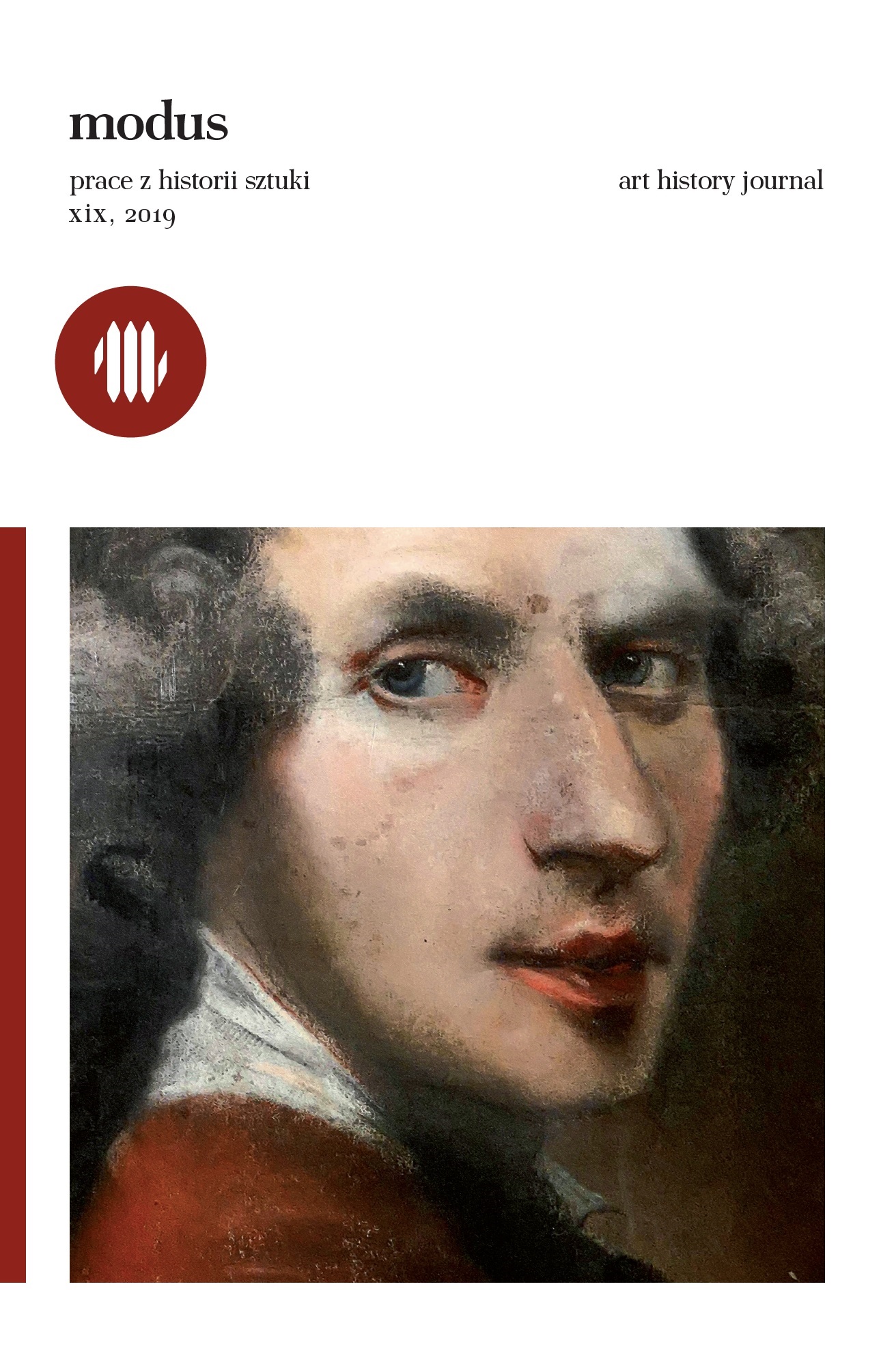Augustyn Mirys: nowe ustalenia i hipotezy
Augustyn Mirys: new findings and hypotheses
Author(s): Konrad NiemiraSubject(s): Fine Arts / Performing Arts, History of Art
Published by: Wydawnictwo Uniwersytetu Jagiellońskiego
Keywords: Augustyn Mirys (painter); painting;18th century art; Jan Kajetan Jabłonowski; pastel;
Summary/Abstract: The above considerations, although of a contributing nature, allow the setting of new research perspectives. First, the postponement of Mirys's arrival to Poland from 1730 to 1739 (and hence the postponement of the "adventurous" period in Mirys's life at the turn of the 1830s and 1940s) can serve as an argument in dispelling attributive doubts. We can say, for example, that Mirys's work is neither the Portrait of Jan Fryderyk Sapieha (Regional Museum in Smolensk; dated after 1736 and before 1740), nor the Portrait of Konstancja Poniatowska with her son (National Museum in Warsaw, dated at the end of the 1930s). 18th century). Secondly, Lviv pastel and Hennin's mention of the sujets galantes painted by Mirys give us hope that in the future we will be able to find the artist's next works. This applies primarily to pastels, which as a research field remain to this day terra incognita. Thirdly, the case of Mirys, a "multi-tasking" artist, painting in oil, pastel, fresco technique as well as on fabrics (uncovered curtain of the Białystok theater), creating - depending on the client's wishes - portraits, religious, historical, mythological and galantes scenes tells us a lot about the local art scene. In Mirys's time, only a few artists (like the pastel artist Marteau) decided on a narrow specialization. Those who tried it, like Marcello Bacciarelli, were eventually forced by their patrons to expand their offer with new species and new techniques. Both in Saxon times and during the reign of Stanisław August, a proven "chance of success" was the diversification of services. Therefore, although Mirys did not make his name on the pages of art history as a talented artist, considered in the context of the career paths and strategy of the painters' strategies he appears to be particularly interesting. Mirys, who worked almost exclusively for magnates and created the appearance of being a court artist, was in fact guided by the same laws of demand and customer pressure that his contemporary artists working on the free market dealt with. The fact that he excelled in fashionable techniques (pastel) and genres associated with the urban modus (sujets galantes) suggests that in his case we are dealing with an artist who is consistently trying to instill in Warsaw alternative standards to those applicable in guild environments, or from guilds originating. This is important because there is no evidence to this day that Mirys received academic education. The fact that he consistently tried to "intellectualize" his work, and consistently tried to build his image as a worldman and philosopher shows that academics did not have a monopoly on artistry. Perhaps further research on the artist's biography and work will show that the transformations of the local art scene that took place in the Saxon era went beyond the opposition of "guild painters" - "academic painters" and contained a third, usually marginalized element: energetic self-made men.
Journal: Modus. Prace z historii sztuki
- Issue Year: 2019
- Issue No: 19
- Page Range: 141-150
- Page Count: 10
- Language: Polish

